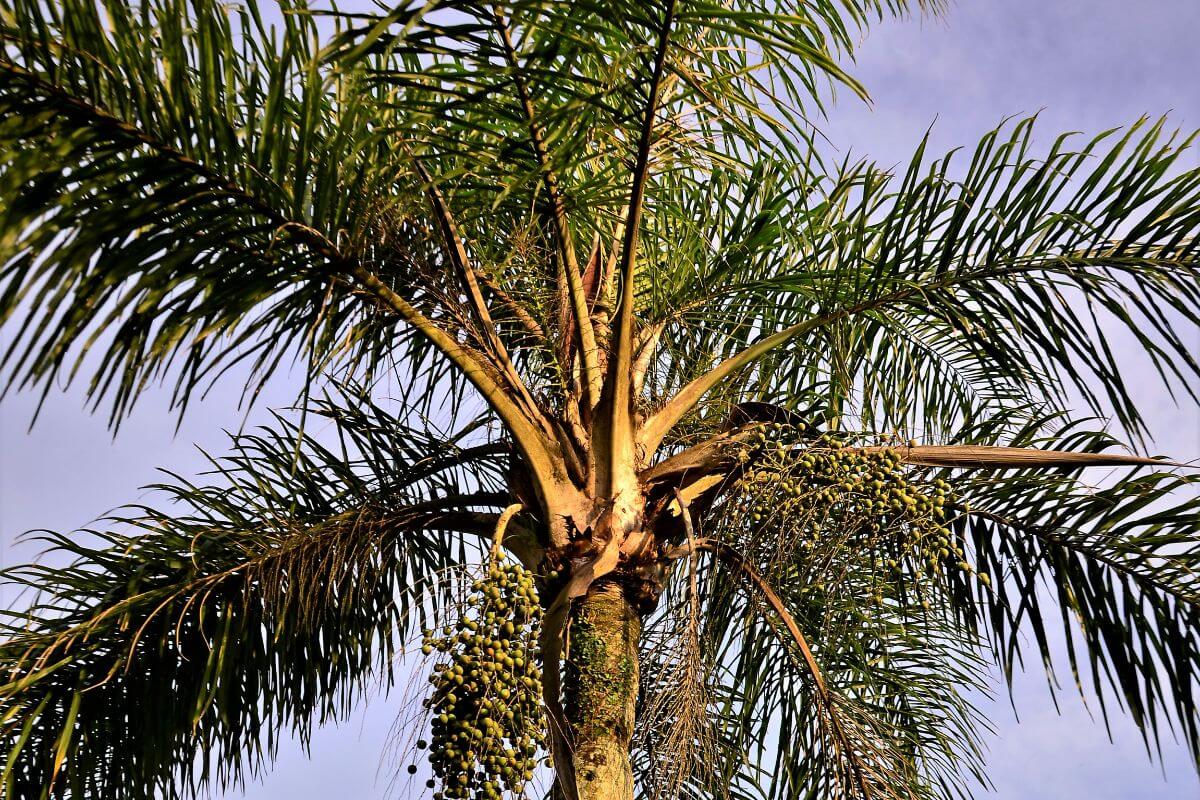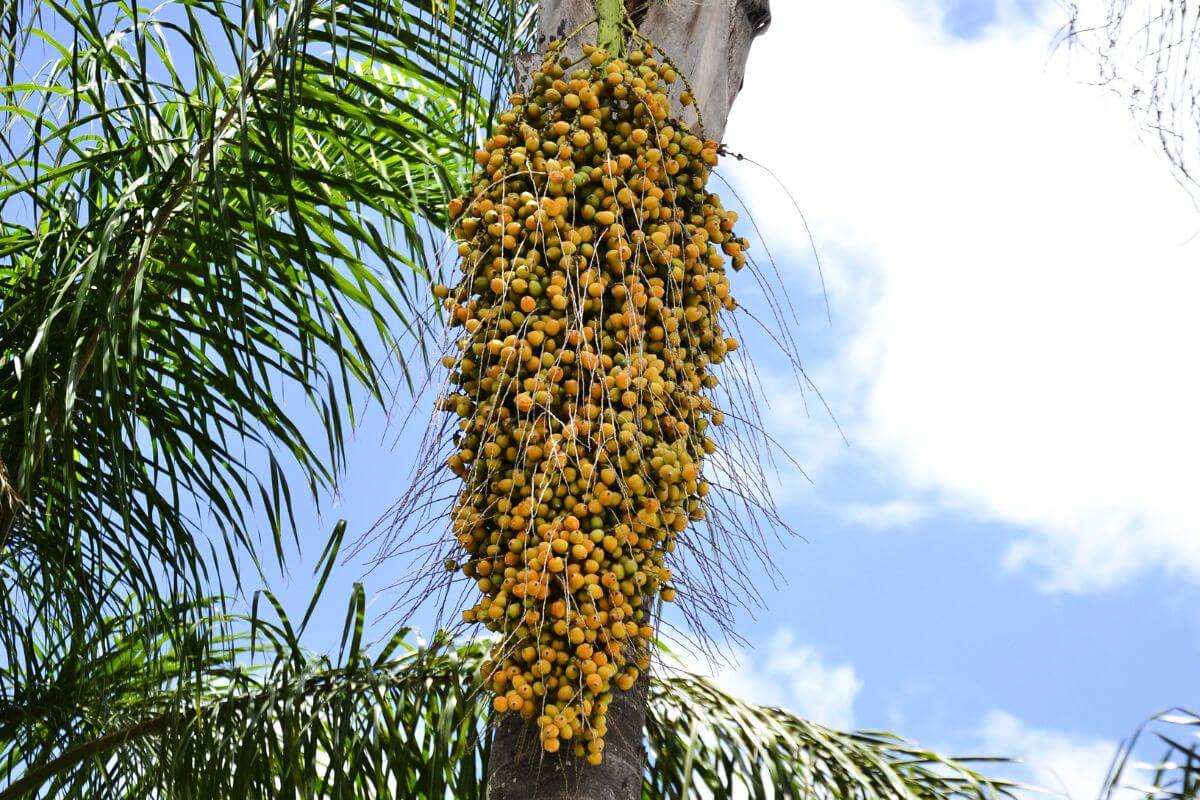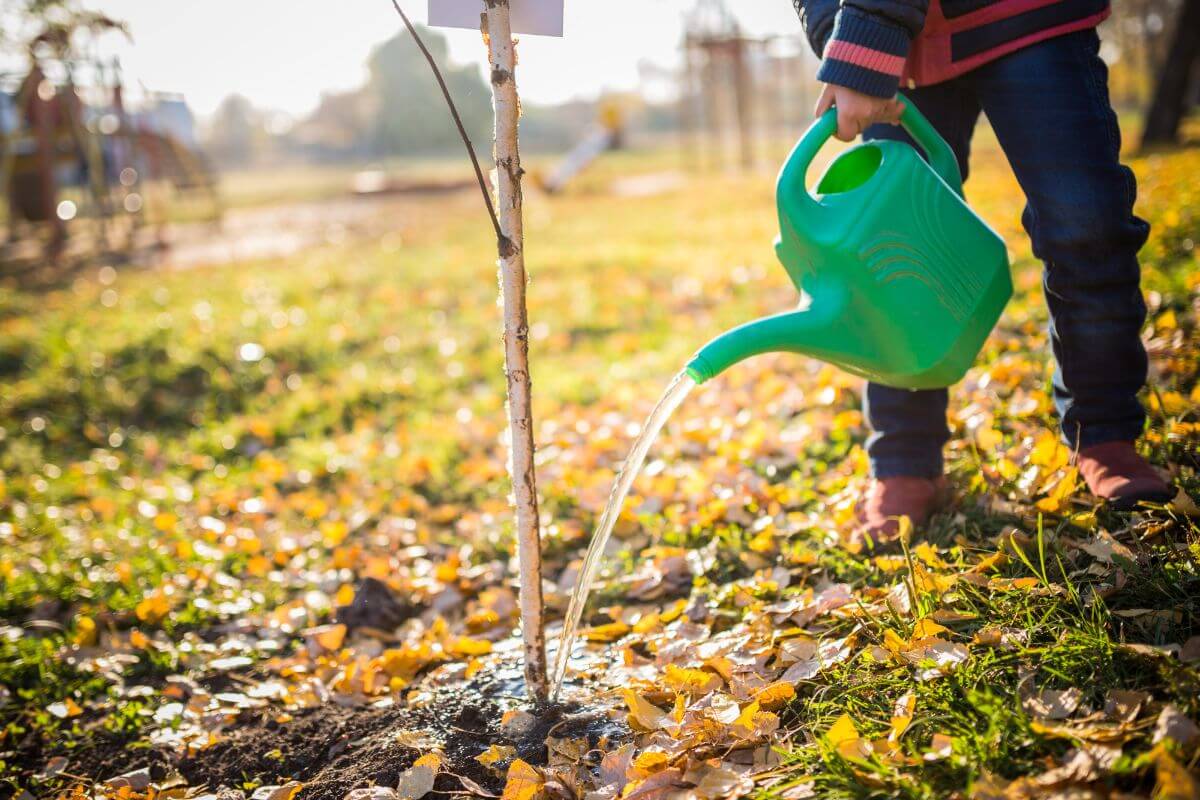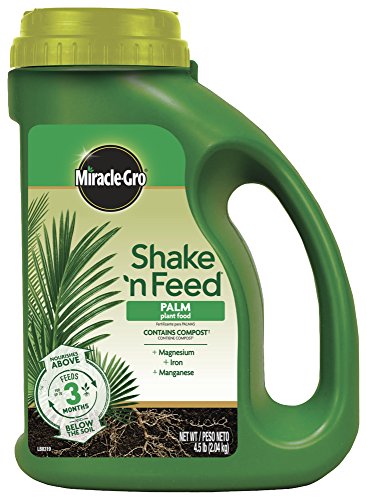Queen palms are a popular choice for many homeowners for their home gardening and landscaping. In fact, they are even used as park and street trees due to their long lifespan and beauty.
However, there are several ways that you can care for these trees and keep them healthy and happy.
In this guide, I will cover everything you need to know about caring for queen palms.
Queen Palm Tree Overview

Native to South American countries such as Argentina, Brazil, Paraguay, and Uruguay, the Syagrus romanzoffiana is commonly called the Queen Palm.
The queen palm is a popular ornamental palm tree used in landscaping. Gulf states and southern California are home to numerous queen palms. Interesting enough, in South Florida, it is considered an invasive species for their prevalence.
A thriving queen palm will have special maintenance needs. As they can grow to exceptional heights of fifty feet, when your palm grows taller, you’ll need professional gardeners to prune it for you or apply treatments to the top of your palms.
These palms are perfect for cultivation in USDA growing zones 9, 10, and 11. Once the palm has established itself, it will grow at a rate of approximately six feet annually.
Generally, these impressive palms reach an average of thirty to forty feet tall. The top of the Palm, or crown, can expand to reach 25 feet in width.
Queen Palm Foliage and Fruit

The leaves of palm trees are referred to as fronds, while specific sections of a frond may be called a “leaflet.” Fronds grow from the palm trunk’s top and form a type of crown.
In the growing season, the queen palm will produce smallish blooms, that in turn produce orange fruit. These dates will fall from the palm when they are ripe.
The queen palm fruit can get messy because they produce clusters of the orange fruit every couple of months that will drop to the ground when ripe.
Queen Palm Care Guide
The queen palm is a plant that loves heat, so it will thrive in subtropical and warm climates.
Caring for this palm tree will depend a great deal on where it is cultivated. Your area’s climate and rainfall should be considered when deciding whether to cultivate one on your property.
An important part of their care will include the correct environmental conditions and pruning.
Sunlight for the Queen Palm
Happily, the queen palm will thrive when exposed to full direct sunlight or in partially shaded areas. Sunlight will be less of a consideration as long as your palm receives sufficient water.
Watering for the Queen Palm

As the natural habitat of this palm is rather rainy and wet, this palm will prefer generous moisture in its soil bed.
Ideally, the growing medium should be soil that is well-draining, so that the palm can enjoy frequent watering. If your area’s climate is moderately warm and sunny, watering two or three times weekly is adequate.
In hot climates, it is recommended to water these palms in the evenings, so moisture in the soil bed will evaporate more slowly.
You can also mulch the soil around your queen palm to help maintain soil bed moisture. If you are planting in a desert region like Las Vegas or Phoenix, queen palms need to be watered frequently.
With a well-draining soil bed, it is next to impossible to overwater these palm trees in the summer. While in more moderate climates, they will exhibit a certain tolerance to drought.
Feeding and Soil for the Queen Palm
The queen palm prefers acidic soil, but they can do well in alkaline soil beds with nutrients like iron and manganese added regularly.
A well-balanced palm fertilizer will save you time as these commercial fertilizers are balanced for the specific palm tree’s needs of nitrogen, potassium, and phosphorous.
More often than not, palm tree fertilizers are slow-releasing, meaning you can feed your palm a couple of times during the year.
Any deficiencies in palm tree nutrition will be evident upon observing your palm. For example:
- Boron deficiency will prevent new foliage from opening or forming correctly. Fronds may all incline in a single direction.
- Manganese deficiency will be evident because dead spots and yellow will appear on frond veins.
Mineral deficiencies can be avoided with good fertilization. This Miracle-Gro Palm Plant Food is a popular choice and can be found online easily.
Pruning a Queen Palm
Not all palm trees will drop fronds that are dead, and the queen palm is one such palm. Pruning will be necessary to remove them and should be performed in autumn.
Only completely dead fronds need to be removed. It is important when pruning to not remove too many of the tree’s fronds at the same time while trimming
When trimming, cut the frond stems several inches away from the tree trunk, to prevent any injury to the palm.
There are pruning tools available for cutting the higher place fronds. Any pruned fronds should be cleaned up and disposed of. Avoid leaving them to deteriorate at the base of the tree.
Propagating a Queen Palm
The queen palm is a self-propagating plant that produces its seeds inside the dates it yields. You must harvest the queen palm seeds from within the fruit before it fully ripens, as chemicals within ripened fruit pulp will inhibit future germination.
Here’s how to harvest and plant the queen palm seeds from the fruit:
- Seeds should be partially ripe and removed from the pulp.
- Soak the seeds in water for several days.
- Place seeds in well-draining potting soil that has been watered well.
- The environmental temperatures for seeding should be above 90°F.
- In two to three months, your palm seeds should germinate.
Seedlings should be transplanted in a location that is bright and sunny in an acidic soil bed.
Growing a Queen Palm in a Pot
These queen palms can be cultivated in pots and containers when young and small.
Bright sunny light and good watering practices will allow the queen palm tree to thrive. When the soil bed is dry to the touch, water your palm until water seeps from the drainage hole. It likes well-drained, moist potting soil.
You can fertilize your container queen palm three times a year or every 4 months with a palm fertilizer, although too much will cause brown leaf tips.
Repot your container palm when it outgrows its pot. This will be evident when roots grow through a drainage hole or peak through the soil bed surface.
A container palm may be susceptible to palm scale, which can be treated with insecticidal soap.
Queen Palm Diseases

This palm tree is susceptible to fungal infections anddiseases.
An example is Ganoderma butt rot caused by Ganoderma zonatum, a fungus that invades the bottom three feet of your palm’s trunk, which will begin to deteriorate. If you feel your palm is not up to snuff, check the trunk base for mushrooms.
Another potential infection is Thielaviopsis paradoxa which will cause the queen palm trunk to rot. If you find that any of your palms are suffering from a fungal infection, it is wise to remove and dispose of the palm so that it doesn’t infect other palm trees.
Queen Palm Tree Care Final Thoughts
The queen palm is a majestic single-trunk palm tree that offers a lovely, glossy green canopy of leaves to any landscaping. They will bring elegance and a tropical flair to your yard.
For more palm care and grow guides:
- Majesty Palm Care and Grow Guide
- Ponytail Palm Care and Grow Guide
- Pygmy Date Palm Care and Grow Guide
Queen Palm Care FAQs
Are queen palms messy?
Yes, queen palms can get quite messy for the clusters of small orange fruit that will grow every two months or so. These orange fruit will drop to the ground and create messes on sidewalks, roads, parking lots, and more.
How do I care for my queen palm?
Caring for the queen palm isn’t too difficult. It takes about five years for a queen palm to reach maturity. During these first few years, you need to provide plenty of sunlight and regular watering. Once mature, you’ll want to give your queen palm some shade during hot summer weather and continue to give it plenty of water.
Are queen palms fast growing?
Yes, the queen palm is one of the faster growing plants around. They will grow up to 6 feet per year when mature. They can grow up to 50 feet tall with most averaging 30 to 40 feet.
Do queen palms need a lot of water?
Yes, queen palms need to be watered consistently. You have to keep them watered around once a week if there’s no rain. The best way to tell how often you need to water your plant is to look at the top inch of soil. If this layer has dried out, then you know you need to water again.
How do you take care of a queen palm plant?
Caring for queen palm plants is easy. Just remember to regularly water your palm as needed. Keep an eye on the soil level in the pots. Make sure they don’t sit in standing water. Also make sure to trim off dead branches periodically.
What should I use to repot my queen palm?
Use a large enough pot to accommodate all sides of the root ball. Use clean fresh, acidic potting mix. Water thoroughly before adding new dirt. Be careful not to overfill the pot. Remove excess dirt after planting.
Do queen palms ever stop growing?
Yes, queen palms will slow down their growth rate after 5-7 years when reaching maturity. After 10-13 years, they won’t grow much anymore as it’s neared or reached its full height.
How long do queen palms live?
When grown in tropical environments, the queen palm can live anywhere between 70 to 100 years with the proper care. Queen palms need to be cared for well with regular watering and feeding for them to live a long life.


